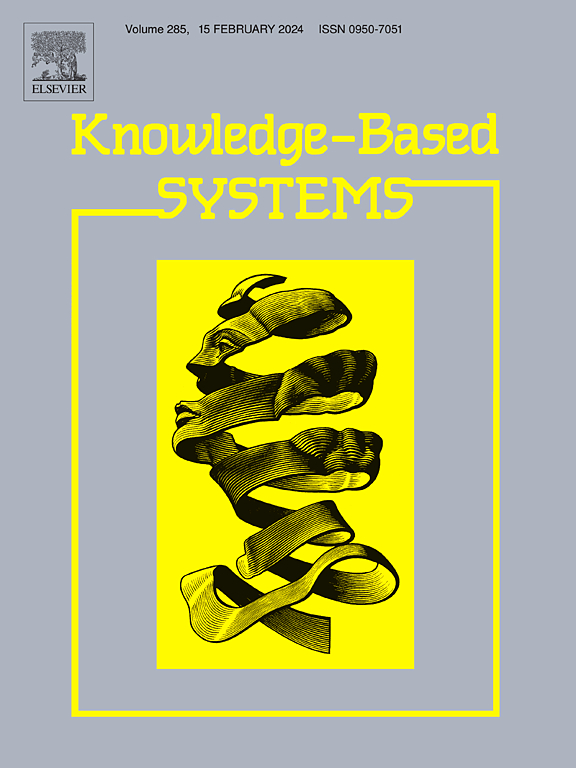From words to visuals: Bridging text and visual insights using MetA-MARC framework for enhanced scholarly article categorization
IF 7.6
1区 计算机科学
Q1 COMPUTER SCIENCE, ARTIFICIAL INTELLIGENCE
引用次数: 0
Abstract
The rapid growth of technology has led to approximately 28,100 journals disseminating 2.5 million research articles annually, posing significant challenges in locating and categorizing articles of interest. Search engines, citation indexes, and digital libraries often return predominantly irrelevant papers due to limited indexing. Existing classification techniques leveraging content and metadata face challenges such as incomplete data and lack of semantic context. Metadata-based methods frequently rely on statistical metrics that neglect semantic meanings and require subject expertise for threshold setting. To address these issues, we propose Metadata-Driven Attention-Based Multimodal Academic Research Classifier (MetA-MARC), a framework leveraging the pretrained CLIP model to integrate text and image modalities for enhanced scholarly article classification. MetA-MARC captures semantic and contextual meaning by integrating metadata, OCR-extracted features, and images through CLIP (Contrastive Language-Image Pre-training). It introduces a novel textual inversion approach to map images to pseudo-word tokens in the CLIP embedding space for robust multimodal representations. The framework employs FusionWeave, a multimodal fusion network combining features using concatenation, cross fusion, and attention-based techniques, alongside Modality-Driven Adaptive Re-weighting (MoDAR) to dynamically prioritize relevant features. Experiments on JUCS, ACM, and proprietary CompScholar datasets demonstrate average accuracies of 0.86, 0.84, and 0.8848, respectively, surpassing state-of-the-art methods by up to 4.05%. These results highlight MetA-MARC’s potential as a robust, adaptive tool for automated scholarly article classification, effectively bridging text and visual modalities.
从文字到视觉:使用MetA-MARC框架桥接文本和视觉见解,以增强学术文章分类
技术的迅速发展导致每年大约有28,100种期刊传播250万篇研究文章,这对寻找和分类感兴趣的文章提出了重大挑战。由于索引有限,搜索引擎、引文索引和数字图书馆通常返回的主要是不相关的论文。利用内容和元数据的现有分类技术面临着数据不完整和缺乏语义上下文等挑战。基于元数据的方法经常依赖于忽略语义的统计度量,并且需要专业知识来设置阈值。为了解决这些问题,我们提出了元数据驱动的基于注意力的多模态学术研究分类器(MetA-MARC),这是一个利用预训练CLIP模型整合文本和图像模式以增强学术文章分类的框架。MetA-MARC通过整合元数据、ocr提取的特征和通过CLIP(对比语言-图像预训练)的图像来捕获语义和上下文含义。它引入了一种新的文本反转方法,将图像映射到CLIP嵌入空间中的伪词标记,以实现鲁棒的多模态表示。该框架采用了FusionWeave,这是一种多模态融合网络,结合了连接、交叉融合和基于注意力的技术,以及模态驱动的自适应重加权(MoDAR)来动态地优先考虑相关特征。在JUCS、ACM和专有的CompScholar数据集上的实验表明,平均准确率分别为0.86、0.84和0.8848,比目前最先进的方法高出4.05%。这些结果突出了MetA-MARC作为一个强大的、自适应的自动学术文章分类工具的潜力,它有效地连接了文本和视觉模式。
本文章由计算机程序翻译,如有差异,请以英文原文为准。
求助全文
约1分钟内获得全文
求助全文
来源期刊

Knowledge-Based Systems
工程技术-计算机:人工智能
CiteScore
14.80
自引率
12.50%
发文量
1245
审稿时长
7.8 months
期刊介绍:
Knowledge-Based Systems, an international and interdisciplinary journal in artificial intelligence, publishes original, innovative, and creative research results in the field. It focuses on knowledge-based and other artificial intelligence techniques-based systems. The journal aims to support human prediction and decision-making through data science and computation techniques, provide a balanced coverage of theory and practical study, and encourage the development and implementation of knowledge-based intelligence models, methods, systems, and software tools. Applications in business, government, education, engineering, and healthcare are emphasized.
 求助内容:
求助内容: 应助结果提醒方式:
应助结果提醒方式:


